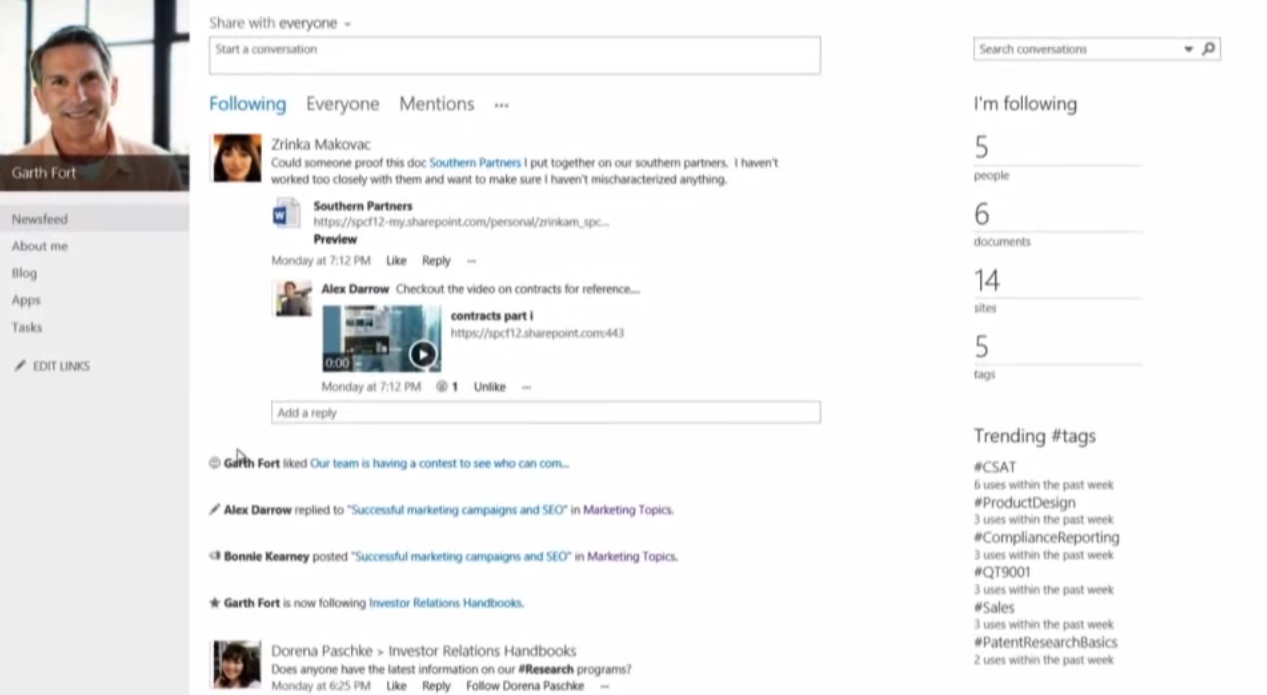KLST is proud to have worked with Fortune 500 organizations across the world to build cutting edge mobile, social, and context-driven collaboration solutions on Microsoft SharePoint that met key business needs and compliance requirements. We provide our clients with game-changing technology strategy, robust solutions that are focused on Social, Mobility, Context awareness, Non-Traditional content, User experience, and Consumerization built on Microsoft SharePoint. Our Collaboration Solutions are tailored to improve operational efficiencies that help unlock key business value levers and stay ahead in the face of unprecedented regulation, competition, and change in end-client profiles.
KLST employs industry experts who specialize in Information Architecture, the science of organizing and labeling unstructured Content and Knowledge (both Tacit Knowledge and paper-based and implementing a robust Content Taxonomy / Architecture in Microsoft SharePoint. A well defined Content Taxonomy can greatly help your organization track every piece of content that is shared both internally with employees and externally with partners/vendors/suppliers, like text, photos, music, video, documents, or just about any type of content that you can think of.
Some of the key benefits of using KLST Content & Collaboration Consulting Services and Product offerings are:
- Rapidly Respond to Business Needs – To help organizations find immediate value for their Microsoft SharePoint implementations, KLST has developed several industry accelerators for Healthcare, Financial Services, Shipping & Logistics, and Law Firms that are tailored to address the common business challenges. In addition, KLST has developed a myriad of SharePoint business solutions and applications that deliver a wide variety of industry-specific functionality, like Legal Contract Review and Approval Workflow, Firm Directory, Vendor Extranet, Investment Banking Middle Office Task Automation, Knowledge Management for Hospitals, and many more.
- Cost Reduction – Using familiar Microsoft Technologies (such as SharePoint, Microsoft CRM, .NET, JQuery & JavaScript, etc) reduces integration time to market and therefore the cost of the project. Furthermore, our collaboration solutions are Microsoft 365 Cloud Ready thereby allowing organizations to pay for the resources used as well as reliable and scalable solutions.
- Improved Collaboration – Using Integrated solutions built on Microsoft SharePoint and Microsoft CRM helps increase employee efficiency and promotes collaboration with intuitive tools and features that give users more time to focus on their core competency. It helps reduce the cost of sales by streamlining and automating key tasks such as approvals and escalations to deliver superior services that improve customer satisfaction and retention.
- Social Firm / Employee Directory – In many firms, SharePoint sites are becoming a gathering place where people create, share, and interact with information. SharePoint 2013 improves relevance based on social behaviors in several ways:
- Social distance – A direct colleague will appear in a search before someone removed by three degrees.
- Click-Through – By identifying that the employee clicked a link in the last similar search, that link is more likely to be the best one this time.
- Social distance – Organizations can allow employees to tag documents in a free-form manner by using enterprise keywords (discussed later). As a type of metadata, enterprise keywords are used by SharePoint 2013 to affect search relevance.
- Query Suggestions – SharePoint 2013 provides search suggestions based on employee’s queries that have returned similar results.
- SharePoint Office Integration / Automation – Microsoft Office InfoPath enables assembling rapid creation of electronic business forms for collecting vessel information and feeding details to a different line of business systems (like Microsoft CRM or SAP ERP).



